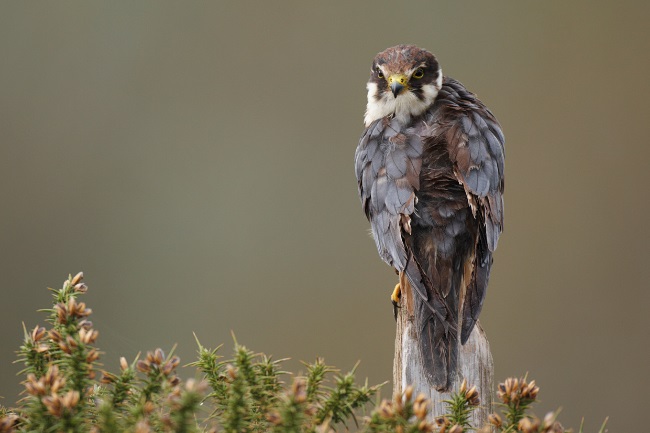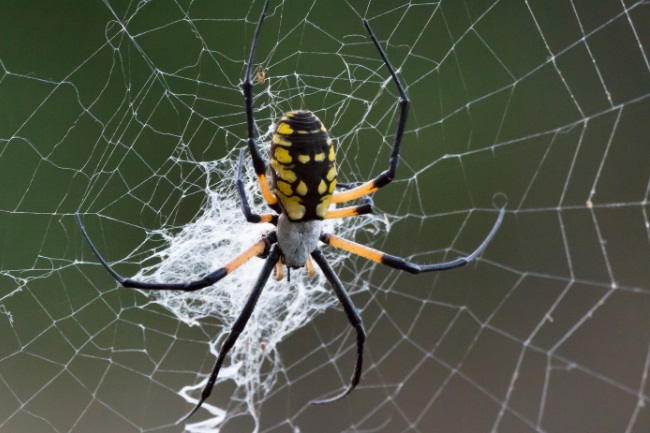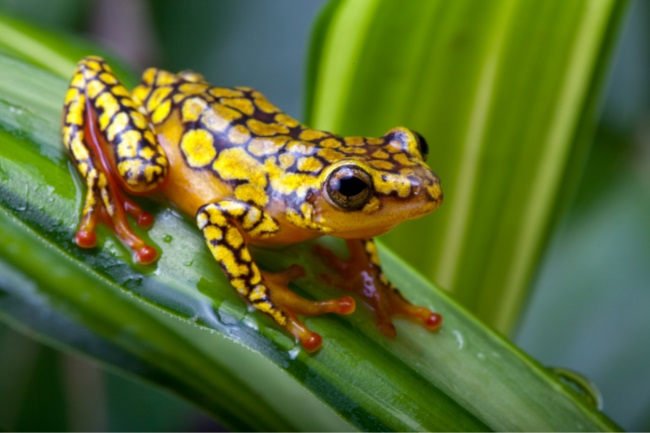Grasshoppers are a fantastic food for many other species. One of the things that make them such an important food source is that they can appear in such large numbers. Their ability to feed on grasses and grow quickly helps boost the numbers of many of the species that rely on them.
Contents
| Predator | Description |
|---|---|
| Birds | Many bird species, such as sparrows, swallows, and crows, feed on grasshoppers. They are often caught while in flight or while perched. |
| Reptiles | Some reptiles, like lizards and snakes, are known to prey on grasshoppers, especially in grassy habitats where they are abundant. |
| Amphibians | Frogs and toads are amphibians that are opportunistic feeders and may consume grasshoppers when available in their environment. |
| Small Mammals | Small mammals, including rodents like mice and voles, may prey on grasshoppers if they come across them while foraging in grassy areas. |
| Insectivorous Insects | Insects such as praying mantises, beetles, and certain wasp species actively hunt and feed on grasshoppers. |
| Spiders | Various spider species, including orb-weavers and jumping spiders, are known to capture and consume grasshoppers in their webs or through active hunting. |
Birds

Many bird species will feed on grasshoppers. The main challenge for most species is the ability to catch them. A grasshopper’s strong back legs allow them to flick away at a moment’s notice.
Some birds even have specialist behaviour that helps them to eat poisonous grasshoppers. For example, shrikes impale their victims on bushes or other sharp objects and leave them there until they are ready to eat them. With the toxic lubber grasshopper, this period of storage allows the chemicals to degrade, meaning they can be safely consumed.
Reptiles
While larger reptiles, such as adders and grass snakes, tend to focus on larger prey, like small mammals and amphibians, many smaller species eat predominantly invertebrates. Slow worms, lizards, and even some smaller snakes will eat whatever comes their way. While they aren’t fast enough to catch a grasshopper once it springs into action, they can catch them through an ambush or sneak attack.
While grasshoppers will not make up the majority of a reptile’s diet, they can certainly be a beneficial addition.
Spiders

All spider species are carnivorous, and most will eat whatever they can get their teeth into. While we tend to think that spiders are primarily consuming flies, what they eat depends partly on luck and in part on their hunting strategy.
Most web-building spiders will broadly catch prey that fly, and more specifically, those that are light enough to get tangled in their silk. Other species are hunters, roaming amongst the foliage to capture what they can.
Many grasshoppers can fly, meaning they can be caught in webs. They can also be caught on the ground, though the spider will have to employ cunning to avoid the grasshopper simply hopping out of its grasp.
Amphibians

Amphibians such as frogs, toads and newts will eat many different kinds of invertebrates, including grasshoppers if they get the chance. However, as most amphibians are relatively slow-moving, catching a grasshopper is often more chance than skill.
Small mammals
Many small mammals eat invertebrates as the central part of their diet. This include species such as shrews, voles and hedgehogs. The grasshopper’s speed can make it difficult to catch; however, during colour periods or at the end of the season when they start to die, the warm-blooded, overwintering mammals have the advantage over them. Larger mammals, such as badgers, foxes and even racoons, may also eat grasshoppers if they can catch them.
Also read: How do Grasshoppers Protect Themselves? (Explained)
Ants
Though many times smaller than most grasshoppers, ants have the benefit of strength in numbers. Grasshoppers can be particularly susceptible to an ant attack when they have shed their skin and are waiting for their new exoskeleton to harden. At this point, they can’t hop or fly away, meaning they are at the mercy of whichever predators find them.
| Pest | Description |
|---|---|
| Praying Mantises | Praying mantises are predatory insects that can consume grasshoppers if they come across them. They are known for their voracious appetite for various insect species. |
| Assassin Bugs | Assassin bugs, with their sharp piercing mouthparts, are adept predators that can capture and feed on grasshoppers and other insects. |
| Robber Flies | Robber flies are aggressive predators that capture insects in flight, including grasshoppers, and immobilize them for consumption. |
| Soldier Beetles | Some species of soldier beetles are opportunistic predators that feed on grasshoppers and other insects found in vegetation. |
| Tiger Beetles | Tiger beetles are known for their speed and agility in capturing prey, including grasshoppers, on the ground or in low vegetation. |
Other grasshoppers
Grasshoppers are generally herbivorous. However, certain species can transform into meat-eaters if the pressures are high enough. These species are known as locusts and become ravenous when the population becomes dense enough. In this situation, they may begin to eat each other if given the opportunity.
How to avoid being eaten

So with all these predators hungrily on the lookout for a tasty grasshopper, is there any way for them to avoid being eaten? Grasshoppers are relatively defenceless compared to some insect groups. They don’t possess stingers or venom, and even their mandibles are unlikely to do much damage to a larger predator.
A grasshopper’s primary defences are running and hiding. This might sound like the cowards way out, but in reality, they are very useful strategies. Running for a grasshopper is less of a speedy trot and more a hop and a skip. With their powerful back legs, they can be propelled away in the blink of an eye. Most species also have the power of flight, or can at least glide, which again aids them in escaping danger.
When it comes to hiding, most are painted in shades of greens and browns to help them fade into the background in long grasses. As grasshoppers spend most of their time munching away on grass stems and leaves, needing to eat as quickly as possible in order to become a big, strong adult, blending in helps them avoid the inconvenient interruption of someone trying to eat them.
Not all species choose to be so subtle, though, with some showing off with bright colours. This can be because they have toxins that make them unpleasant to eat, or sometimes they are smartly pretending to have toxins even though they are perfectly suitable to be snacked on.
Nature’s table
Grasshoppers are often the first link in the food chain and support a wide range of mammals and birds, as well as all kinds of other wildlife.
We often think of putting out bird peanuts or tins of hedgehog food. However, the best possible provision for wild animals is to create a habitat that will sustainably feed them, such as by planting fruit trees or wildflowers.
In terms of grasshoppers, all you need to do is give them long grass, in which they can breed and feed. This means not cutting the grass too regularly, particularly not in the summer. Once the grasshoppers make themselves at home, they can then become food for all kinds of animals.
It might not be as ornamental as a bird table, but it does the job in a more nature-friendly and sustainable way.

